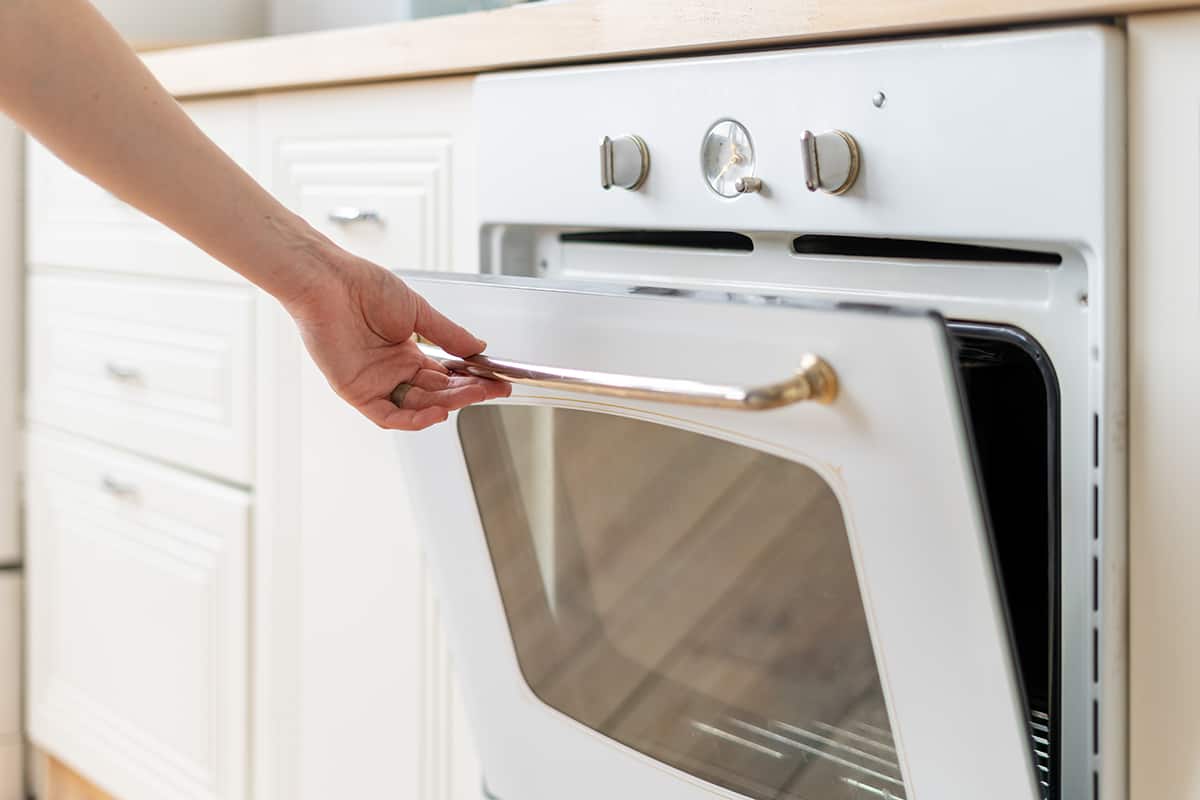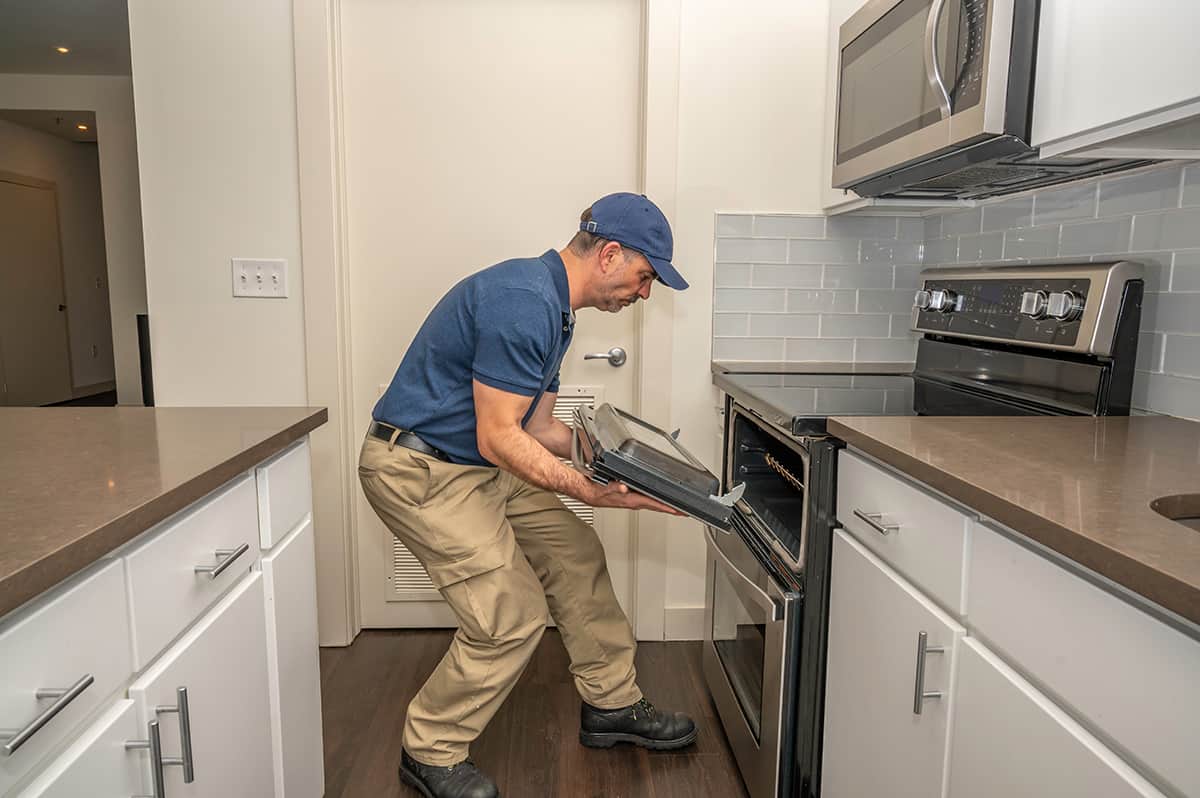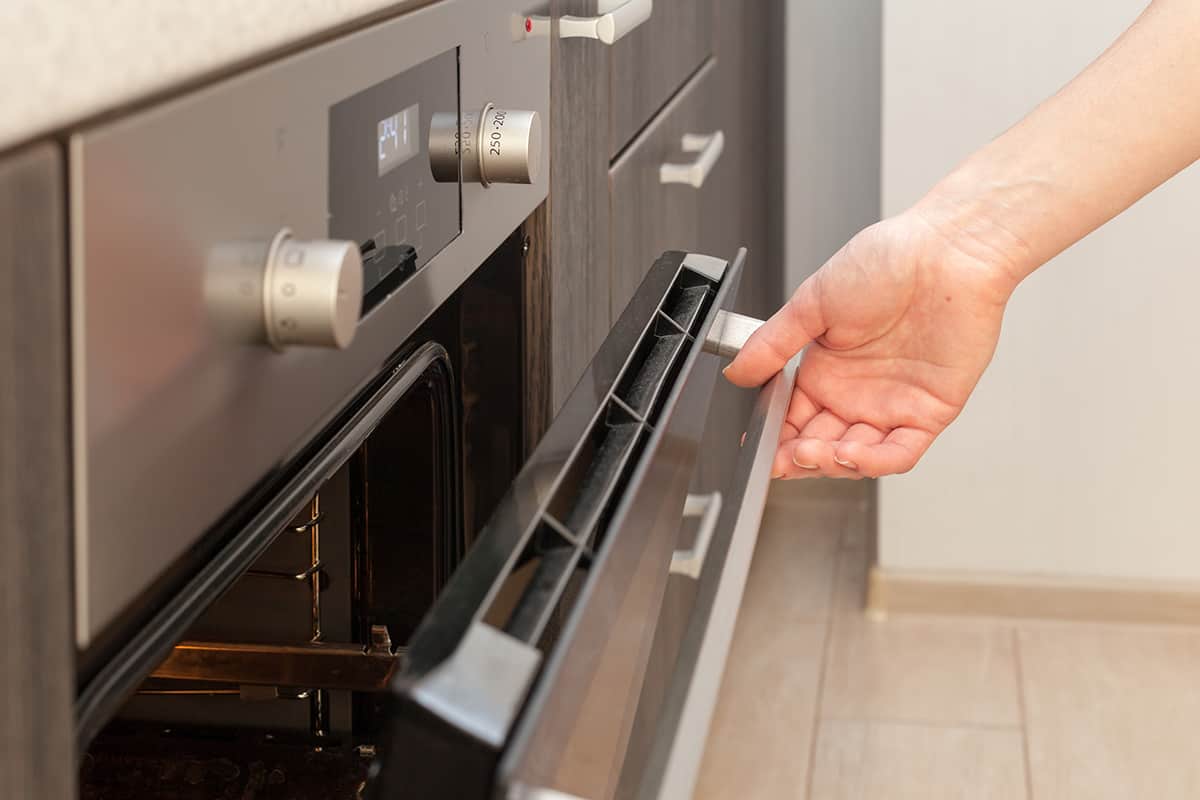Many homeowners regard the kitchen as the heart of the home, with the oven playing a pivotal role in crafting daily meals to special feasts. However, problems can arise, one of which is an oven door that doesn’t close fully. This common issue can lead to inefficient cooking, wasted energy, and even safety hazards.
An oven door may not close fully due to the following:
- Misaligned hinges
- Damaged door seals
- Faulty door springs
- Obstructions in the door
- Broken latch or lock system
Fortunately, this problem is usually fixable, often without the need for professional help. In this guide, we will learn the reasons behind a stubborn oven door and do-it-yourself solutions.
Oven Door Mechanism

The oven door, while seeming simple at a glance, comprises various components that all contribute to its correct operation. Each part is designed to withstand heat and wear, facilitating the oven’s overall performance. The key parts include:
- Door Panels: An oven door typically consists of inner and outer panels. The inner panel, made of heat-resistant material, is engineered to endure high cooking temperatures. The outer panel, on the other hand, is designed to remain relatively cool to the touch, providing both insulation and safety.
- Hinges: These are metal joints that connect the oven to the door, allowing it to swing open and shut. Over time, hinges can become loose or misaligned, preventing the door from closing correctly.
- Door Seal: Often made of heat-resistant rubber or silicone, the door seal lines the oven’s interior edge, trapping heat inside for efficient cooking. Damaged or deteriorated seals can lead to heat leakage.
- Door Springs: These ensure the door maintains tension, enabling smooth opening and closing. If these springs are worn out or broken, the door might not close fully.
- Latch/Lock System: This component secures the door when closed, often engaging when the oven is set to self-cleaning mode. A faulty latch can keep the door ajar.
When you close the oven door, the hinges swing the door into place while the door springs provide the necessary tension to keep it shut. Simultaneously, the door seal forms a tight insulation barrier, preventing heat from escaping and ensuring uniform temperature inside the oven. Lastly, the latch or lock system clicks into place, securing the door and ensuring safety, particularly during the self-cleaning cycle.
Reasons Why Your Oven Door May Not Close Fully
If you’ve noticed your oven door isn’t closing all the way, you’re likely experiencing one of several common issues. By understanding the potential causes, you can take steps towards a solution.
1. Misaligned Hinges
The hinges attach your oven door to the oven itself, allowing it to swing open and close. Over time and with frequent use, these hinges can become misaligned or wear out. This misalignment can prevent the door from fully closing, leading to heat escaping during cooking.
2. Damaged Door Seals
Your oven door seal, often made from heat-resistant rubber or silicone, plays a critical role in maintaining the oven’s internal temperature. It creates an insulating barrier, preventing heat from escaping when the door is closed. However, with continuous exposure to high temperatures and frequent use, the seal can deteriorate or become damaged.
3. Faulty Door Springs
Door springs provide the necessary tension to keep the oven door securely closed. Over time, these springs can wear out or break, reducing the tension needed to close the door fully. If you notice your oven door is not closing tightly or appears loose, it might be due to faulty door springs.
4. Obstructed Oven Door
Even the smallest obstruction can prevent your oven door from closing fully. Food debris, grease, or other foreign objects lodged in the door’s path can affect its ability to close.
5. Broken Latch or Lock System
The latch or lock system on your oven door is designed to keep it securely closed, particularly during the self-cleaning cycle. If this system becomes damaged or malfunctions, it can prevent the door from closing completely.
How to Fix an Oven Door That Won’t Fully Close

When your oven door won’t close fully, your first instinct may be to call a professional. However, you might be able to diagnose and fix the problem yourself. Here, we’ll explore different strategies for each potential issue.
1. Correcting Misaligned Hinges
First, you’ll need to remove the door from your oven, which typically involves lifting the door at the hinge connection. Then, examine the hinges for signs of damage or misalignment. If they appear bent or warped, they’ll need to be replaced. If they’re merely misaligned, carefully reposition them and then reattach the oven door.
2. Replacing a Damaged Door Seal
Door seals can usually be removed by simply pulling them off. You can then install a new seal, ensuring it fits snugly around the entire door. Remember to consult your oven’s manual for specific instructions, as procedures can vary by model.
3. Addressing Faulty Door Springs
Faulty door springs can be a bit more challenging to replace and may require more care due to the tension they hold. First, the oven door must be removed. With careful attention to safety, the springs can be detached and replaced. Consider wearing protective gloves and eyewear during this process.
4. Removing Obstructions
Regularly cleaning your oven can help prevent build-ups that might cause door issues. You can use a damp cloth or a small brush to clean around the door seal and hinges, ensuring no debris is preventing the door from closing.
5. Fixing a Broken Latch
Fixing a broken latch or lock system can be a bit more complex, as it often involves disassembling part of the oven door. If you’re not comfortable doing this yourself, it might be time to call a professional. They can ensure the repair is done safely and correctly, preventing further damage to your oven.
FAQs
1. Why is my oven cooking unevenly?
A common issue is a faulty oven thermostat that can’t maintain the proper temperature, causing hot and cold spots. Additionally, a failing heating element might not distribute heat evenly, leading to patchy cooking.
A worn-out or damaged door seal could let heat escape, affecting cooking temperature. Lastly, overloading your oven or placing dishes too close to the top or bottom can also lead to uneven cooking.
2. Can I use my oven if the door doesn’t close fully?
While it might be tempting to use an oven with a door that doesn’t close fully, it’s not recommended. The primary reason is energy efficiency. Heat escaping from an unclosed door means your oven has to work harder to maintain its temperature, consuming more energy.
Also, the escape of heat can lead to uneven cooking or longer cooking times. An open oven door poses a safety risk, potentially causing burns, especially to children or pets.
3. What are the risks of using an oven with a door that won’t fully close?
Using an oven with a door that won’t fully close comes with several risks. Firstly, energy inefficiency, as more heat is lost to the surroundings, making the oven work harder. Secondly, it might lead to unevenly cooked or undercooked food due to inconsistent temperatures. Another risk is safety-related.
An oven door that doesn’t close properly can increase the chance of accidental burns. Also, during a self-cleaning cycle, a non-closing door can allow high temperatures to escape, posing a fire risk. Therefore, fixing any door issues promptly is crucial for efficient, safe oven operation.






